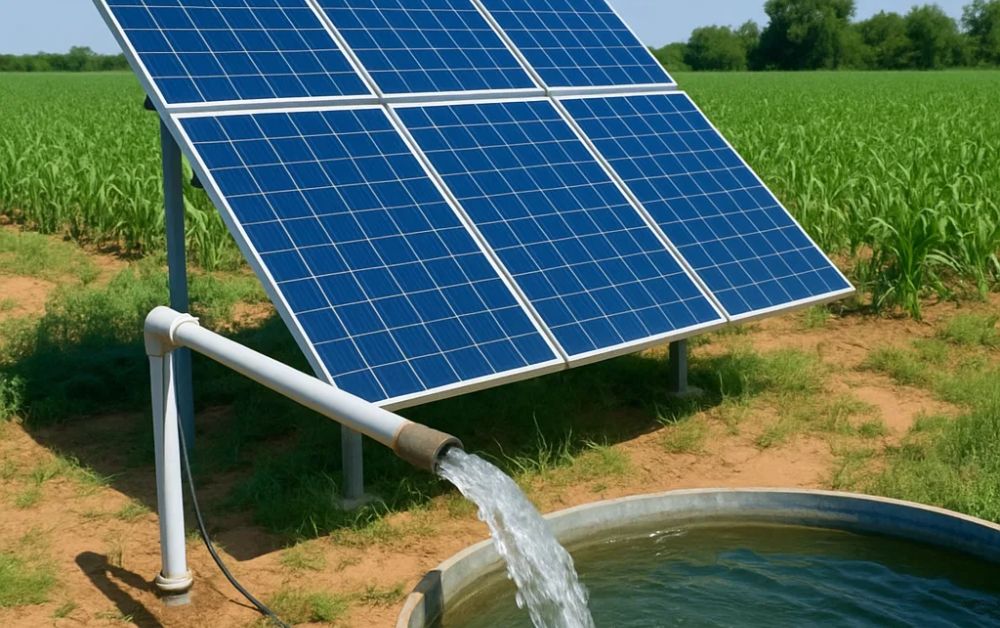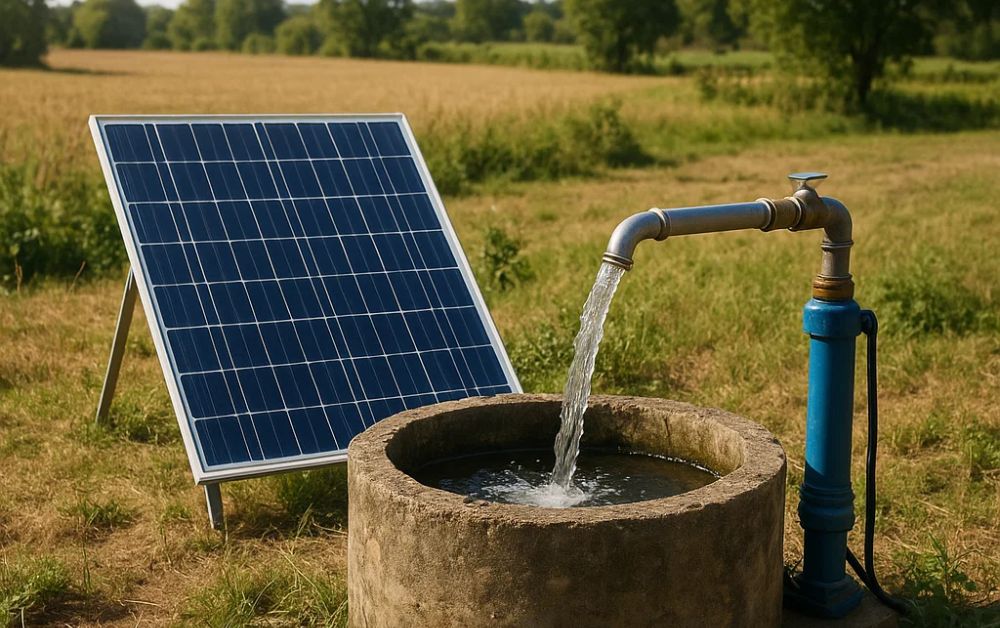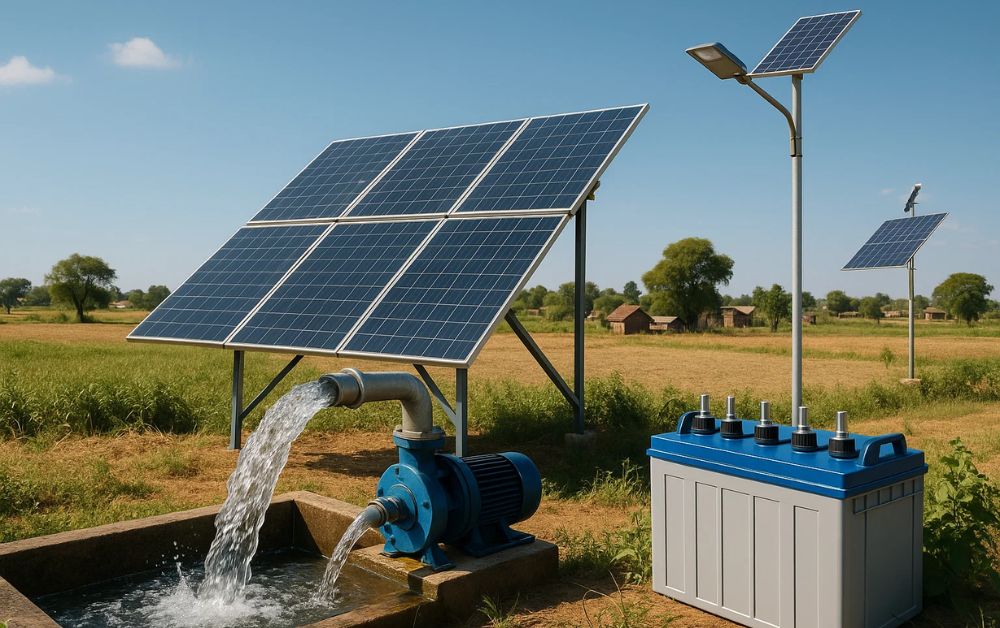Sustainable agriculture is more critical than ever in light of escalating pressures on water and food resources and rising energy prices in the context of climate change. The most hopeful innovation in agricultural sustainability can be viewed through solar water pump technology. Solar irrigation pump systems have transformed farmers’ access to and utilization of water resources, particularly in remote or off-grid areas. This post explores why solar water pumps are the future of sustainable irrigation, referring to their benefits, working principles, and long-term influence on agriculture and the world.
Introduction: A New Era of Irrigation
Conventional irrigation systems based on diesel or electric pumps, besides being costly, are also harmful to the environment. Such systems tend to produce fuel emissions, have high running costs, and depend on grid electricity, which is frequently unreliable in rural areas. With the world heading toward clean and renewable energy resources, solar water pumping systems are becoming a low-cost, environmentally friendly option for farmers.
Solar water pumps harness the power of the sun to pump water from sources like boreholes, rivers, or wells and hence are extremely useful in arid and semi-arid regions. Through reduced consumption of fossil fuels and ensuring a more consistent supply of water, they are a vital innovation for modern agriculture.

How Solar Water Pumps Work
Solar water pumps run on photovoltaic (PV) panels that generate electricity from sunlight. The electricity drives the pump, which pulls water from the source and distributes it to the field or a storage tank. The central elements of a standard solar water pumping system are:
- Solar panels
- Controller/inverter
- Pump (submersible or surface)
- Water storage (optional but widespread)
There are two major types of solar water pumps: submersible pumps, which are used for deep water sources, and surface pumps, which can be used for shallow water sources. The system’s scalability makes it viable for application from a small vegetable garden to a vast farmland.
Advantages of Solar Water Pumping Systems
1. Eco-Friendly and Renewable
Solar water pumps utilize clean solar energy, reducing greenhouse emissions and the environmental impact of irrigation. This fits with global agendas for the mitigation of climate change and the promotion of sustainable agriculture.
2. Cost-Effective in the Long Term
While the initial installation cost will be substantial, solar water pumping systems are cost-saving in the long run. They reduce fuel costs and maintenance requirements and, in most cases, enjoy government subsidies or incentives.
3. Low Maintenance and Long-Lasting
These mechanisms have fewer moving parts than traditional pumps, so they experience less wear and tear. They can withstand harsh conditions, and upkeep is minimal.
4. Energy Independence
Solar pumps allow farmers to be independent of grid electricity or the availability of diesel. This is especially significant for farmers in rural areas with poor infrastructure or recurrent power outages.
5. Water-Efficient Irrigation
Solar water pump systems can be integrated with modern irrigation techniques like sprinkler or drip systems to maximize water use and minimize wastage.
6. Scalability and Flexibility
Small and big agricultural farms find solar water pumps relatively easy to upscale. Farmers can upscale their systems through incremental additions, depending on water needs and farm size.
Role in Sustainable Agriculture
Sustainable agriculture relies on efficient resource use, environmental protection, and economic sustainability. Solar water pumps satisfy all three of these requirements:
- Efficient Use of Resources: They reduce the reliance on fossil fuels and enable precise irrigation, conserving energy and water.
- Environmental Conservation: Solar water pumping systems reduce carbon emissions and prevent air and land pollution due to diesel.
- Economic Sustainability: Lower operating costs and increased crop yields translate into increased profitability for farmers.
By promoting the conservation of resources and economic benefits, solar pumps assist in developing a stronger and self-reliant agricultural economy.
Case Studies: Real-World Impact
Farmers in most developing countries have already adopted solar water pumping systems. For example:
- In India, small-scale farmers have increased crop productivity by switching from diesel pumps to solar pumps through support from government initiatives like PM-KUSUM.
- Governments and NGOs have brought off-grid villages with solar pumps to the African continent for increased food security and reduced urban migration.
- Solar irrigation has enabled desert farming in Middle Eastern arid lands, converting sandy land into productive fields.
The success stories highlight how solar water pumps are not a fad but a revolutionary solution for world agriculture.
Challenges and Considerations
Even with the numerous advantages, the adoption of solar water pumping systems has some challenges:
- Initial Investment: The initial investment can be discouraging, particularly for small-scale farmers without credit or subsidy access.
- Technical Knowledge: Some technical knowledge is needed for installation and maintenance, which may not be easily accessible in remote localities.
- Water Source Reliability: Solar pumps depend on reliable water sources; regions with decreasing groundwater levels might require extra planning.
However, these challenges are being addressed through financing mechanisms, training programs, and government schemes to enhance access and efficiency of solar irrigation.
Government and Policy Support
To encourage the widespread usage of solar water pumps, numerous governments are offering subsidies and incentives. These are:
- Financial assistance for installation and equipment
- Low-interest loans to farmers
- Awareness programs and training to make users more sensitized
- Partnerships with NGOs and the private sector to ensure last-mile delivery and maintenance
This is the key policy in bridging the innovation-implementation gap.

Conclusion: The Future is Bright — and Solar-Powered
The transition to sustainable irrigation is not only required; it is imminent. Solar water pumping technology represents a scalable, environmentally friendly, and affordable solution for agriculture worldwide, particularly in water-scarce and energy-poor regions. With further advances in solar technology and decreasing costs, solar water pumps will become more affordable and indispensable for farmers globally.
In the near future, with sunlight energy in conjunction with innovative irrigation systems, IoT-based monitoring, and sustainable land use practices, we will redefine what we define as agriculture.
It is no longer a debate about why solar water pumps will be the future of sustainable irrigation – it’s already underway.
By adopting this clean technology, we guarantee improved harvests and healthier living for generations to come.



